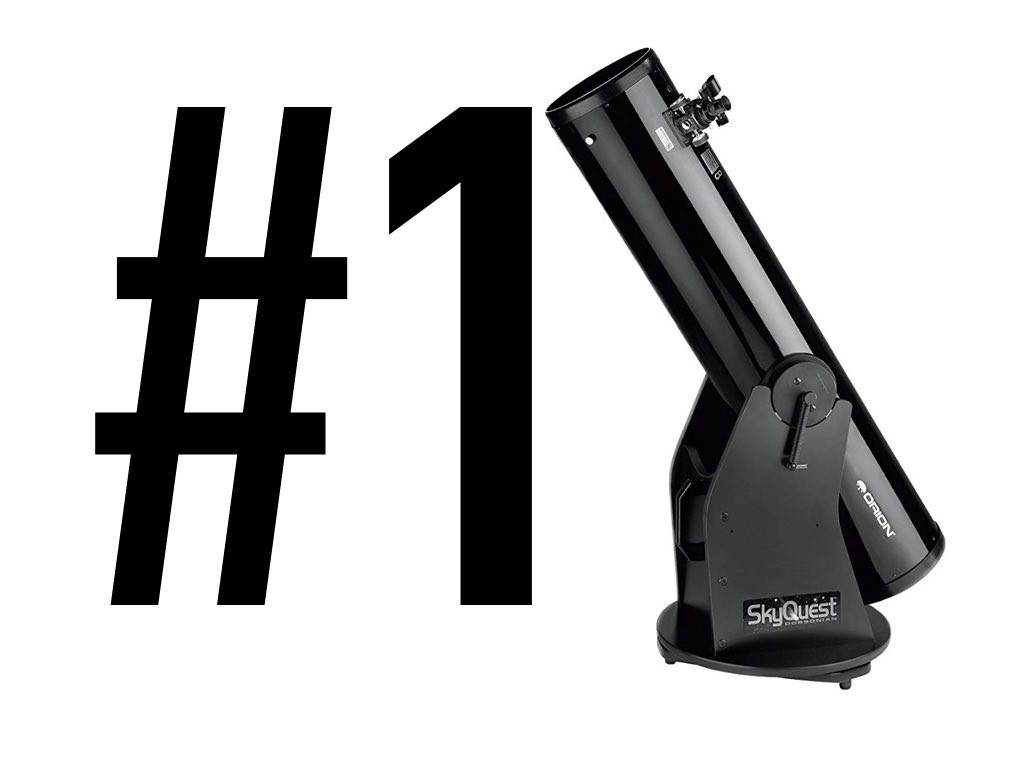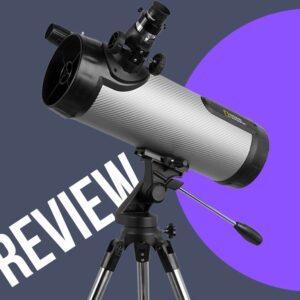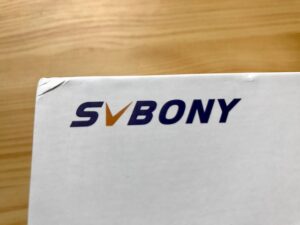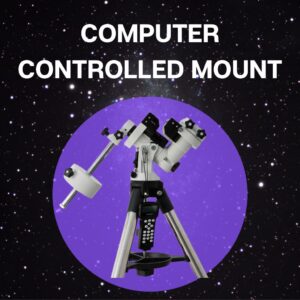This site contains affiliate links to products. I may receive a commission for purchases made through these links.
If you are a regular reader of my blog, you may have noticed that I’m a big fan of Newtonian telescopes.
I have nothing against refracting telescopes, but I like the fact that reflecting telescopes will show you much more in the sky for a lower price. So I will be reviewing Orion SkyQuest XT8 telescope today.
Orion SkyQuest XT8 Telescope Review
Orion SkyQuest XT8 is a Dobsonian telescope. Dobsonian telescopes are the best possible choice for all beginners because they offer great value for the money. They are easy to use, the assembly process is fast, and stargazing with them is beginner friendly.
Let’s take a closer look at the Orion SkyQuest XT8 telescope.
What Is Dobsonian Telescope?
The name Dobsonian telescope comes from the base on which the Newtonian telescope is mounted.
Dobsonian telescopes are exclusively reflecting telescopes. I’m not aware of any refracting telescope mounted on the Dobsonian base. It has a simple design where the optical tube is literally sitting on the base that moves in altazimuth directions.
The Dobsonian base is also famous and loved by astronomers because it can carry heavy loads. This is why Dobsonian telescopes are much cheaper and have a bigger aperture than telescopes on different mounts like the German equatorial mount.
The Dobsonian base is easy and cheap to manufacture, so you can spend the rest of the money on the bigger and better optical tube.
You may also like: Is A Cheap Telescope Worth It?
Aperture
The aperture of the telescope is the diameter of the primary mirror. The primary mirror is the big mirror at the end of the optical tube. The primary mirror is the heart of every Newtonian telescope, and the size of this mirror will determine what you can see with a particular telescope.
The bigger the mirror is, the more light the telescope collects, and you can see fainter objects. So, going for the biggest aperture you can afford is always a good idea. The primary mirror of this telescope is a more advanced parabolic mirror compared to low-cost telescopes with only spherical primary mirrors.
Orion SkyQuest XT8 has an aperture of 8″, as we can already see in its name. The 8″ aperture is very reasonable because of its multiple points.
You can enjoy the night sky even with a 5″ telescope, so an 8″ is an excellent option because it is still not too big and heavy. Still, it can collect much more light than the 5″ telescope. Bigger apertures like 10″ will show you even more, but they are becoming too heavy to carry around, so if you plan to take your telescope on the trip under the dark sky, the 8″ is a perfect option.
Focal Lenght
The focal length or the distance from the primary mirror to the focal point in the focuser is part of the telescope, which determines the magnification of the telescope when combined with the focal length of the eyepiece.
The focal length of the Orion SkyQuest XT8 is 1200mm. This focal length is decent and also provides good portability for the telescope.
It is easy to carry around, and it will fit in the trunk of any car. The focal length of 1200m will provide good magnification and a pleasant field of view if you use the correct eyepiece for different objects.
Focuser
The Orion SkyQuest XT8 is made with a 2″ Crayford focuser that accepts both 1.25″ and 2″ accessories. The standard size is 2,” but it has a nice 1.25″ adapter.
It’s a standard focuser used in most telescopes. The feature of using 2″ accessories is great even if the accessories that are in the box are 1.25″.
So, if you want to upgrade something to 2″, there is no issue with that. Many telescopes come only with 1.25″, which limits the telescope’s potential. Orion did a good job here. I like it.
Accessories
The Orion SkyQuest XT8 comes with Sirius Plossl 25mm eyepiece, giving you 48x magnification.
Calculating magnification is very easy. You have to divide the focal length of the telescope by the focal length of the eyepiece you want to use (in this case, 25mm). High magnification is not essential when you are looking for deep-sky objects like nebulas or star clusters.
The high magnification is necessary only with the Moon and planets. You can increase the magnification of the eyepiece by using the 2x Barlow lens included in the package, which will double your magnification to 96x.
Because Orion SkyQuest XT8 has only one eyepiece in the box, I highly suggest upgrading the eyepiece collection with more eyepieces so you can squeeze as much as possible from this amazing instrument.
You will also get a small collimation cap in the package, which is used to collimate the mirrors in the reflecting telescopes, so you don’t have to buy any additional collimation tools.
The collimation with this cap is simple, and you can read my article on how to do the collimation of the telescope because I’m not going to explain it in depth here.
First Light
The assembly of this Dobsonian telescope is straightforward, and it will take you around 30 minutes. But there is one crucial thing you have to do before your first stargazing night.
The Orion SkyQuest XT8 has a small red dot finder that needs to be aligned with the optical tube. This piece of equipment works as a finder scope and is used to locate objects in the night sky. But if it is not calibrated, you will have difficulty finding anything.
The best way to do it is during the day.
- Place an eyepiece in the focuser and point the telescope at some solid object like a tree, the roof of a house, or an electric pillar.
- Center it in the eyepiece and look through the red dot finder.
- Adjust the red dot finder with two screws until you can see the object in the eyepiece in the red dot finder.
Now you are ready for the night.
Always look for the object through the finder and center it (you will see it in the eyepiece too).
Don’t forget to turn off the red dot finder after each stargazing session because it will drain your batteries, and the next night can be frustrating.
Now, because it is a Newtonian telescope, it has an open tube design. It means that the heat is escaping from the tube while the telescope is cooling down, and because of this, it is not recommended to use the telescope the minute you take it outside.
You must leave it for a few minutes to cool down before every session; otherwise, you will have difficulty focusing.
The hot air will make the image wobble, and it will be blurry no matter what you are trying to do. Because the 8″ parabolic primary mirror is quite big, I recommend at least 45min before every stargazing session. Also, it will depend on your location and temperature outside, but you will learn it over time.
What You Can See Through Orion SkyQuest XT8
Because this telescope has an aperture of 8″, it will show you almost everything. As I said before, I recommend buying more eyepieces with shorter focal lengths to enjoy the close-ups of the planets, the moon craters, and surface features.
Galaxies, nebulas, and star clusters will be nicely visible with the provided 25mm eyepiece, so there is no stress. However, the limit of what you can see is also highly affected by the night sky.
Don’t expect miracles if you are in a heavily polluted area like in the middle of the city.
The telescope won’t be able to show you the deepest sky objects, if any. The best way to use it is under the dark sky, away from the light pollution, and then you can see wonders with this Dobsonian telescope.
You may also like: What Can You See With a 70mm Telescope? (Answered!)
Stargazing Tips
I was explaining why you have to cool down the telescope before each session to prevent the blurry image. The same effect on the quality of the image can also have hot air released from objects on the ground.
If you are outside and trying to see the object in the sky that is above the nearby house roof, it can be a problem. The hot air accumulated during the day will escape the roof, distorting the image you see in the eyepiece. This is the case, especially with planets near the horizon.
Always look for objects over open grass, mountains, or woods rather than over some housing area. It will get better during the night, but right after the sunset, it is the worst. The telescope will show you amazing images, but the atmospheric conditions and your location for observation must be adequate, so don’t blame the scope if you have problems with observations.
Cons – Astrophotography
If you plan to do astrophotography with this telescope, I have to disappoint you. It is not possible because the Dobsonian mount is not made for astrophotography. It is a manual, not motorized which is essential to do long exposure photographs of deep sky objects.
Overall, this is the only downside of the Orion SkyQuest XT8. But this telescope was not made for astrophotography; it is made for breathtaking visual observations of the universe.
You can use a webcam with it if you really want to, to make some short videos of the Moon and the planets, but that’s all.
Speaking of astrophotography, this telescope is a fantastic companion if you have an astrophotography rig; you can enjoy the universe visually while you are waiting for the camera to finish those 100 long exposures.
You may also like: Can I Use My Telescope Through a Window?
Verdict
The Orion brand is one of the top manufacturers of telescopes and is well known for its exceptional customer service.
If you have decided to buy this telescope, you will be more than happy not only with the Orion SkyQuest XT8 but also with the service that Orion provides if something goes wrong. Dobsonian telescopes are perfect for beginners but also an ideal upgrade for your smaller telescope if you already have one.
The Orion SkyQuest XT8 is the best that you can buy if you are looking for value and performance.
You may also like:






